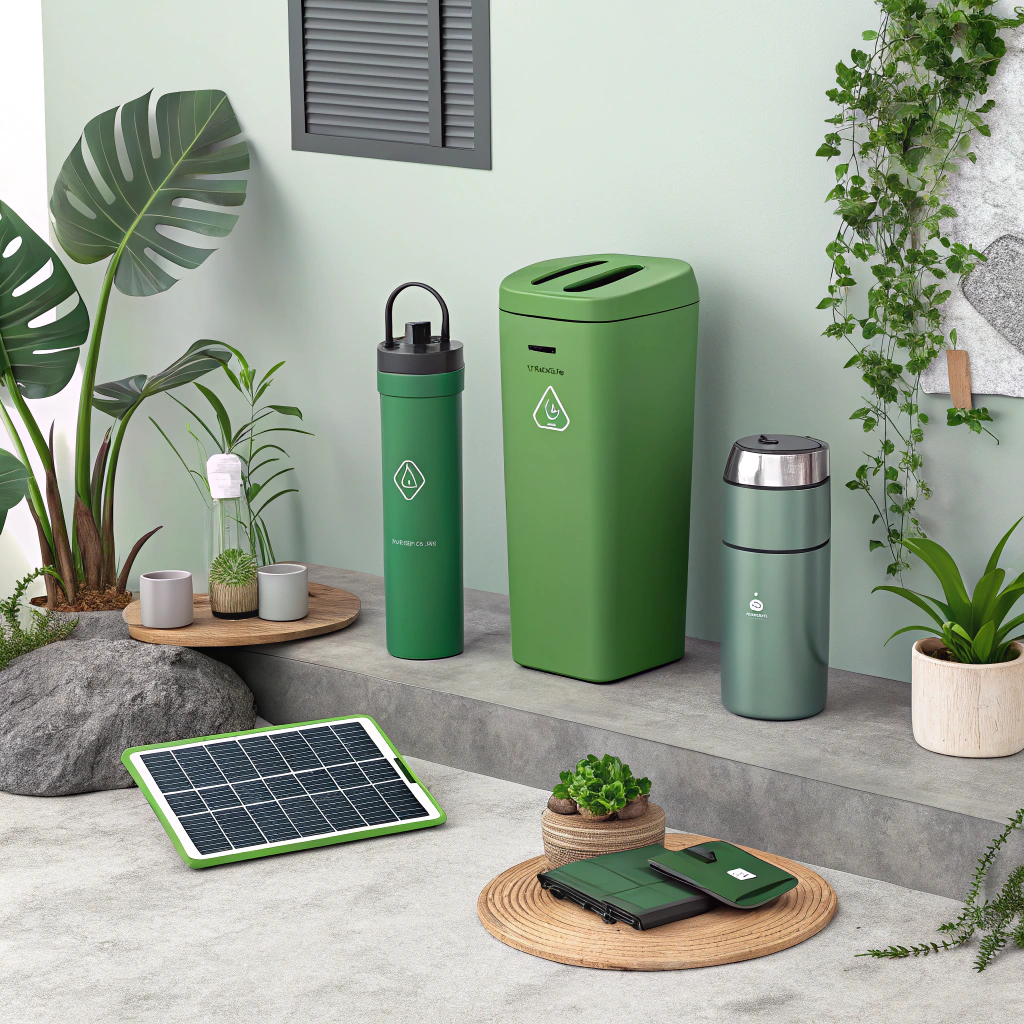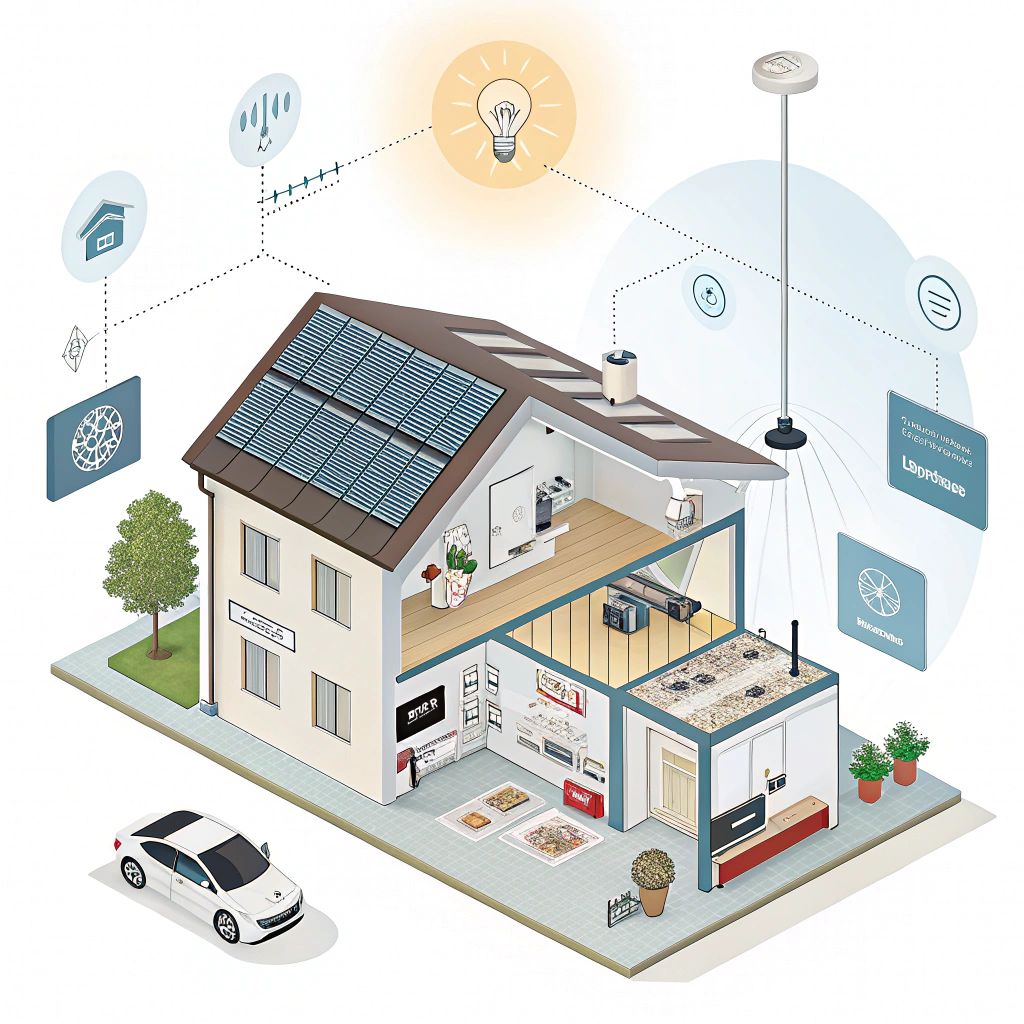
Eco-Friendly Gadgets: Innovation Meets Sustainability
Introduction

In 2025, technology meets sustainability in exciting new ways. Gadgets are not just sleek and powerful—they’re conscious, efficient, and better for the planet. As consumers and regulators demand greener options, technology companies are stepping up, integrating renewable energy sources, recycled materials, modular design, and energy-efficient systems into everyday devices. Let’s explore how sustainable gadgets are redefining our tech lives.
1. Solar-Powered Smart Devices: Energy from the Sun
Solar-powered gadgets are moving into the mainstream. Innovations once confined to calculators and garden lights are now powering headphones, speakers, backpacks, and even phones.
- Solar-powered headphones and speakers now leverage flexible solar-cell technologies like Exeger’s Powerfoyle to recharge on the go with sunlight exposure. Brands such as Urbanista and Philips are pioneering these designsMedium+3The Green Muse+3shopspherenest.com+3TechRadar.
- Wearable solar tech appears in watches such as the Garmin Enduro 2 and Suunto Vertical, which can run for weeks—or even a year—without needing a plugEl País+1Medium+1.
- Solar chargers and power banks like diverse foldable Anker and Goal Zero models now feature high-efficiency panels and integrated batteriesKnowledgepedia.
These gadgets not only reduce reliance on grid electricity and fossil fuels but promote energy autonomy—ideal for travel, emergencies, or everyday eco-conscious charging habits.
2. Modular Design & Repairability: Gadgets That Last
A key way to fight e-waste is designing devices to last—and to be fixable.
- The Fairphone 6, a flagship of this ethos, uses over 50% fair-trade or recycled materials and is built for self-repair (“battery and camera can be swapped with just a screwdriver”), coupled with a promise of long-term OS and security updatesAP News+15tremhost.com+15El País+15.
- Framework laptops, TechCycle laptops, and others promote modular hardware: users can replace components like RAM, storage, or even motherboards, extending device life while reducing environmental footprintKnowledgepedia.
- Remanufactured laptops by firms like Circular Computing deliver devices comparable to new units, with each unit avoiding hundreds of kilograms of CO₂ emissions and resource use via certified processesWikipedia.
By prioritizing sustainability at the design stage, brands are redefining ownership and longevity in tech.
3. Recycled and Biodegradable Materials: Closing the Loop
Sustainability also comes through materials choices.
- Major brands like Apple, Dell, and HP now incorporate recycled aluminum, ocean-bound plastics, and recycled cobalt into their devicesMaku Space -+6Knowledgepedia+6connectihub.com+6.
- Accessories—such as phone cases—are shifting to biodegradable plant-based materials: Pela Cases (made from flax shive and biopolymers), Nimble cases, Native Union plant-based AirPods cases, and other earth-friendly options are now mainstream choicesSurroundedbygoodpeople.
- New frontiers: components like bioplastic earbuds, leather alternatives from cork and apple skin, and packaging using soy‑based ink and minimalist, recyclable designs ensure sustainability beyond just the gadget itself.
Consumers increasingly demand transparency and eco‑certifications like EPEAT and EcoVadis—forces pushing tech makers toward more responsible materials sourcing and production practices.
4. Energy Efficiency & Smart Home Integration

Sustainable gadgets aren’t just green—they’re smart.
- Smart thermostats like Nest and Ecobee now use AI to adapt to household routines and weather, effectively cutting energy use and heating/cooling billsITWeek.
- Smart plugs and energy-monitored outlets give detailed insights into phantom power usage and let users schedule appliance cycles to conserve electricityconnectihub.com+2The Green Muse+2shopspherenest.com+2.
- Smart home sensors powered by solar cells or made from biodegradable materials deliver environmental monitoring while allowing natural decomposition at end‑of‑life destinationsVocal.
Integration of these devices into eco-conscious homes enables methodical, data-driven control over resource consumption.
5. Next‑Gen Innovations: Biokinetic, Carbon‑Capturing & Hybrid Solutions
Beyond the solar and recycled trend, the green gadget frontier includes bold new ideas.
- The GreenCall X1, launched in mid‑2024, is billed as a carbon‑negative smartphone: it pairs biodegradable casing with an integrated filter that captures CO₂ from the ambient air as you use itLifewire+3ITWeek+3shopspherenest.com+3Vocal.
- Kinetic-powered wearables, like the FitEco Watch, generate energy from body movement—reducing or eliminating the need for charging entirelyVocal.
- Air‑purifying wireless chargers (e.g. AirPure Charging Pad) clean surrounding air while charging your phone—a dual-purpose sustainable solutionVocal.
- Biodegradable triboelectric nanogenerators (TENGs) using plant proteins demonstrate future sustainable electronics in agriculture—although not yet gadgets for consumers, they hint at what’s possible in eco‑hardware innovationarXiv.
6. Why It Matters: Environmental Gains & Consumer Momentum
These innovations matter because:
- They help tackle the global e‑waste crisis—over 50 million tons annually—with low recycling ratesKnowledgepedia+1tremhost.com+1.
- Extended lifespans, repairability, and modularity reduce demand for new devices, slowing resource extraction and carbon output.
- Renewable-powered gadgets reduce reliance on fossil fuels and help build energy resilience—especially when integrated into off‑grid or emergency systems.
- Increasing consumer awareness and regulatory demands push even major brands to adopt ethical materials and transparent, responsible practices.
CES 2025 highlighted a turning point: gadgets are no longer about minor feature upgrades but focus heavily on personal health and planetary sustainabilityVox.
7. Spotlight Products & Trends of 2025
Here are standout examples making waves in sustainable tech:
- Solar gadgets featured in El País, Italy include: a solar‑recharging pocket radio, Samsung’s battery-free remote, perovskite solar cell phones, solar‑powered backpacks, and keyboards like Logitech K750 that operate through light aloneEl País.
- Exeger‑powered headphones and helmets that harness Powerfoyle solar cells for charging—affordable and efficientTechRadar.
- Fairphone models (particularly Fairphone 6) remain leaders in ethical sourcing, up to eight years of software support, and top scores from ethical consumer ratingsWikipedia+1tremhost.com+1.
- Circular Computing’s remanufactured laptops, certified to reduce emissions and resource use dramatically, offer a viable alternative to new purchasesWikipedia.
8. Practical Tips: How to Buy & Use Sustainable Gadgets
To build a greener tech routine, consider:
- Buy solar-powered and energy-efficient models—portable solar chargers, solar earbuds, solar‑charging backpacks.
- Choose modular or repair-friendly devices—like Fairphone, Framework laptops, or products offering extended software support.
- Look for recycled or biodegradable materials—e.g., phone cases from Pela or Native Union, keyboards made from bamboo or recycled plastic.
- Opt for refurbished/remanufactured tech—devices from Circular Computing or certified refurbishers reduce environmental burden.
- Use smart home tools to monitor and control energy use (smart plugs, thermostats, sensors).
- Support ethical certifications such as EPEAT Gold, EcoVadis rankings, or B Corp status when evaluating brandsVox+14WIRED+14Knowledgepedia+14Surroundedbygoodpeople+2Medium+2connectihub.com+2SurroundedbygoodpeopleWikipedia.
- Maintain and repair gadgets when possible—extend their lifespan instead of replacing unnecessarily.
9. Challenges & Future Outlook
While progress is promising, challenges remain:
- Production scale: Sustainable material sourcing and modular manufacturing are still more expensive and limited in scale.
- Consumer awareness gap: Not all buyers value repairability or eco‑credentials equally.
- Regulatory misalignment: Stronger legislation is needed globally to incentivize green tech adoption.
- Recycling infrastructure: Even well‑made gadgets need effective end‑of‑life systems to close the loop full circle.
Yet the future is ripe with opportunity. Innovations leveraging kinetic energy, airborne CO₂ capture, biodegradable electronics, and circular business models are pushing the boundaries. As technology evolves alongside greater consumer demand and policy momentum, sustainable gadgets will shift from novelty to norm.
Conclusion
“Green Tech: The Rise of Sustainable Gadgets” is already reality—not just a trend. Solar charging, modular design, recycled materials, repairability, and intelligent energy management have converged to create a new generation of devices that respect the planet without compromising performance.
Today’s choices—like choosing Fairphone, solar‑powered earbuds, smart plugs, circular products, or biodegradable accessories—matter. They build momentum toward a greener digital future. As we move forward, sustainable gadgets offer more than convenience—they help us make every device count in the fight against climate change.

